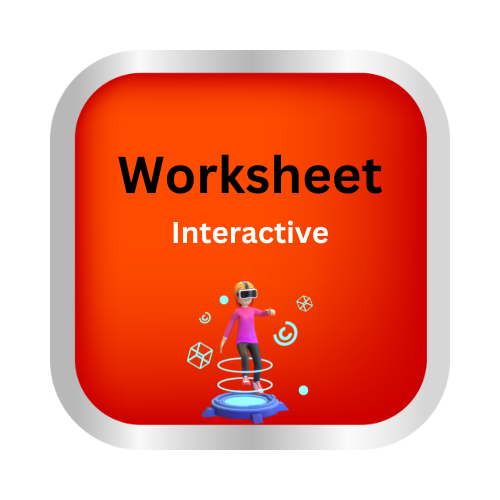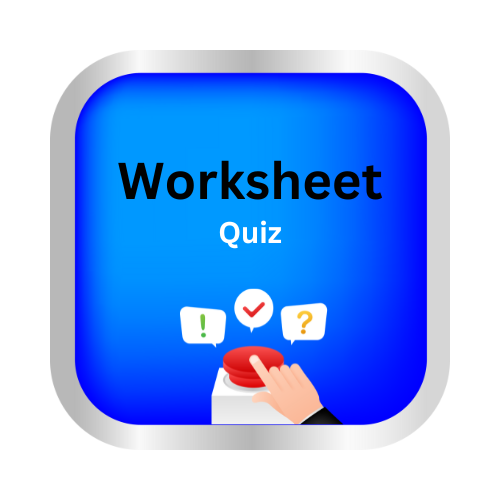Count vertices, edges and faces
Key notes :-
1. Vertices
- A vertex is a corner where edges meet.
- If you touch a corner of a box, you are touching a vertex.
- More than one vertex is called vertices.
🟢 Example: A cube has 8 vertices.
2. Edges
- An edge is a line where two faces meet.
- It is like the side of a shape.
🟢 Example: A cube has 12 edges.
3. Faces
- A face is a flat surface of a 3D shape.
- You can place your hand flat on a face.
🟢 Example: A cube has 6 faces.
🧱 Examples of 3D Shapes
| Shape | Vertices | Edges | Faces |
|---|---|---|---|
| Cube | 8 | 12 | 6 |
| Rectangular Prism | 8 | 12 | 6 |
| Pyramid (square base) | 5 | 8 | 5 |
| Cylinder | 0 | 2 | 3 |
| Cone | 1 | 1 | 2 |
| Sphere | 0 | 0 | 1 |
🎯 Fun Tips to Remember
- Corners = Vertices
- Lines = Edges
- Flat parts = Faces
🧠 Quick Practice (with real-life objects):
- Cube → Dice
- Cylinder → Can
- Cone → Ice cream cone
- Sphere → Ball
Learn with an example
🖊️How many faces does this shape have?
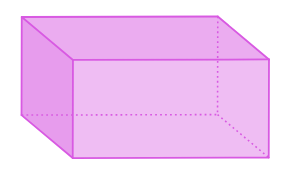
__________faces
Faces are the flat parts of the shape. Here is a face.
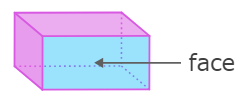
Count the faces.
Start with the two opposite faces.
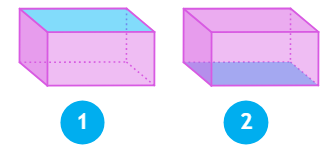
Next, go around the shape.

The shape has 6 faces.
🖊️How many faces does this shape have?
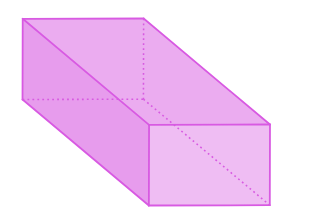
__________faces
Faces are the flat parts of the shape. Here is a face.
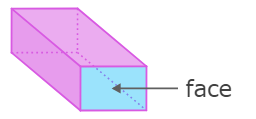
Count the faces.
Start with the two opposite faces.
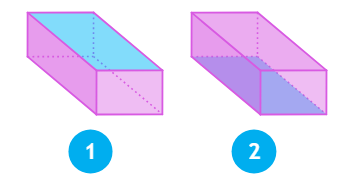
Next, go around the shape.

The shape has 6 faces.
🖊️How many faces does this shape have?
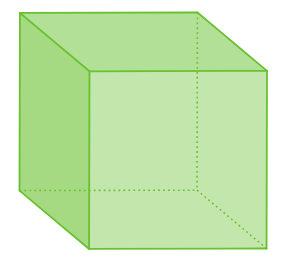
__________faces
Faces are the flat parts of the shape. Here is a face.
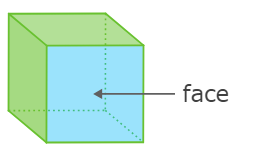
Count the faces.
Start with the two opposite faces.
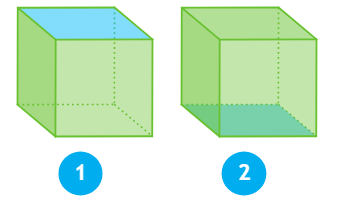
Next, go around the shape.

The shape has 6 faces.
Let’s practice!
